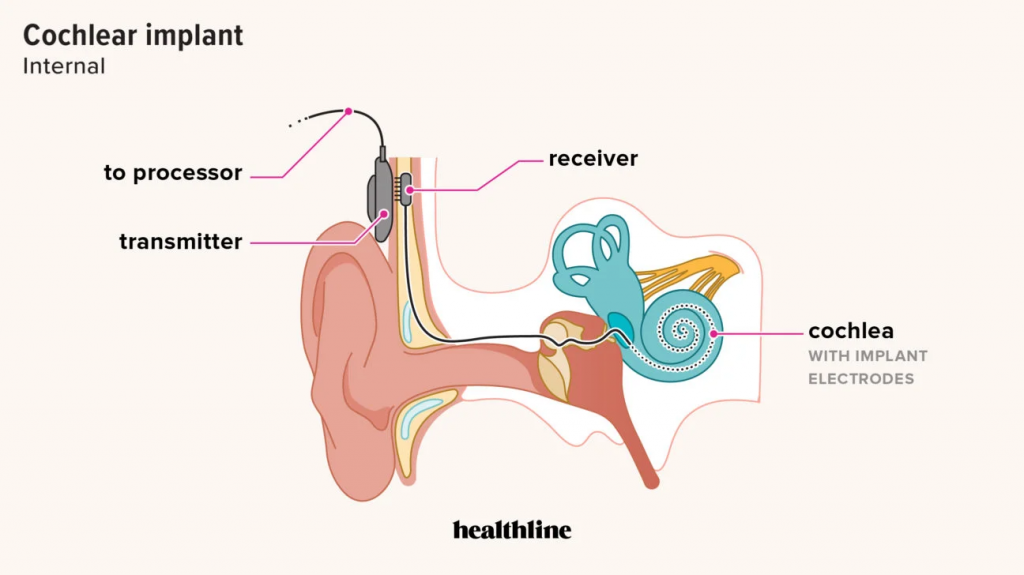Think back to your childhood and the incomparable difference of the technology then and now. Now think of the possibilities that future technology could consist of.
“Back when I was child we didn’t have all this technology”
The loss of limbs has significant impacts on individuals and can occur due to car accidents, wars or even a defect at birth. In America alone there are 185,000 amputees per year and this number is growing Medical and technological advances have currently provided us with some forms of myoelectric bionic arms so what could the future hold for us?
Listen here: Cochlear implants are redefining hearing
When understanding medical and technological advances it must be recognised that for innovative advances in prosthetics, both the scientific and technological aspects have to be advancing at a suitable rate. For example, in order for cochlear implants to of been created, a deep understanding of the physiological antinomy of the ear and nervous system had to be understood. We needed to recognise that individuals with auditory disabilities often stem from the concept of damaged hair cells in the inner ear. By recognising this we used developing technology to replace the need of these hairs. The implant serves to process sound waves through the use of a microphone and are able to convert these sound waves into electrical signals. These can bypass the cochlear hairs and stimulate the auditory nerve fibres. This begs the question, well what other lost functions can we restore?

This singular device has such a huge impact on millions of peoples life’s. Could a prosthetic like this be adapted to have hearing beyond the capability of current humans?
How prosthetic limbs are giving amputees a helping hand !
Currently, we have myoelectric prosthetics which are important in replacing the function of a lost limb such as an arm. These work by using the muscles in the residual limb to send signals to the bionic arm. These signals will inform the electric arm to contract or relax etc. This is done through the stretching and contractions of the muscles from the residual limb. As impressive as this is… it’s not ideal. The user has limited options in what the hand can do, such as very limited finger individual finger movement. Moreover, if there’s a lack of suitable muscle by the residual limb or no residual limb then it becomes almost impossible for the hand and arm to work. A battery is also required meaning the device needs charging or batteries frequently. This is important as in terms of living in society, the individual is still at a disadvantage and due to a limited mobility, the product may not satisfy the consumer enough.
Current research is focusing on fully integrated prosthetics. This would have a huge impact on our society. Fully integrated prosthetics involves solely involves the nervous system to bring about a response. To the user this would almost feel the same as if they had an arm or leg. They would “think” about moving a finger and it would move. In addition, as the interface is controlled by the individual’s own biology, no battery would be required in the same way the average individual doesn’t require a battery. However ethically and legally this could cause concern. Although this would be very effective for the amputee, you would effectively be building a chimera between man and machine. This could be militarised as rather than just restoring the function of an arm or leg, you could enhance it for military purposes. Even having such specific control over a carbon fibre arm; in public this could be conceived as dangerous. New military laws and national laws would have to be introduced.
When designing a product like this, the potential danger that could be introduced to society needs to be examined yet the number of people’s lives that could be improved is incredible. So, the question is… Is it possible to advance/improve our civilisation technologically without causing a new problem? …No, I don’t think so. Do you?
This is an interesting topic that is clearly well-researched and understood. However, the readability could be significantly improved by a careful proofread. There was an attempt of some reflective writing towards the end, however this should be attempted throughout the blog post to convey the writer’s thoughts and opinions throughout. Why were you interested in this topic? What did you learn while researching? What do you think about the potential ethical considerations?